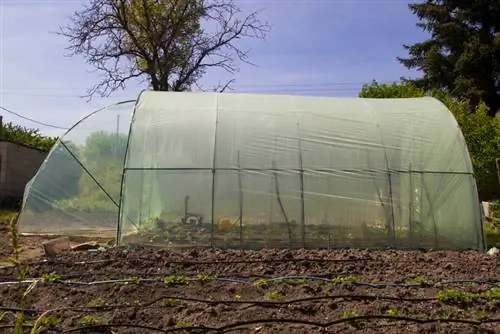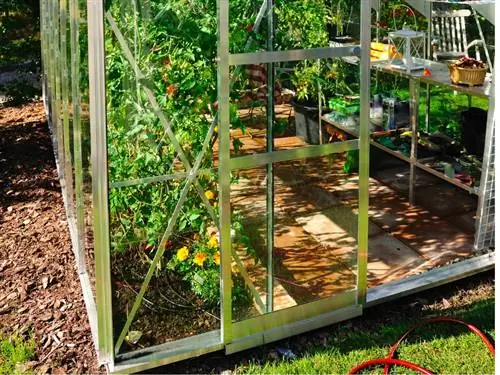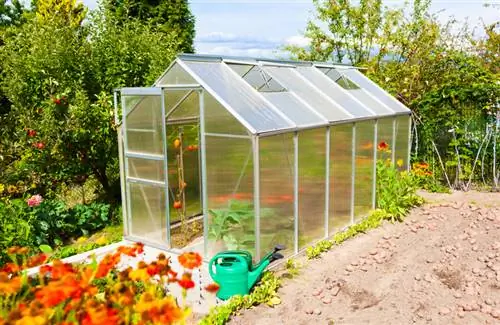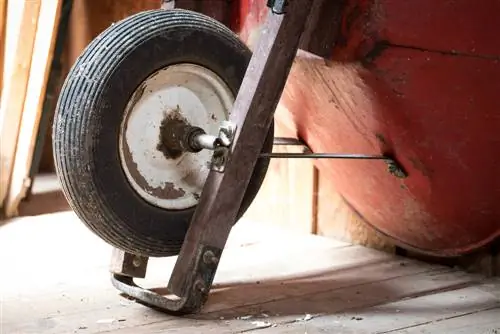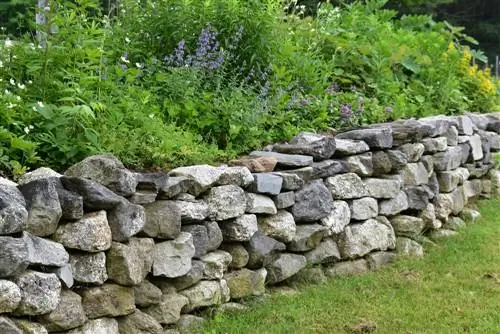- Author admin [email protected].
- Public 2023-12-16 16:46.
- Last modified 2025-01-23 11:21.
Even if the greenhouse is a small structure, the alignment of the structure should be done carefully and according to certain individual aspects. How, where and what will later be under glass is just as important as the correct installation of the structure.
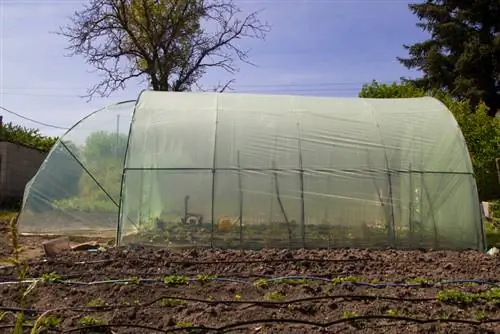
How can I set up and level a greenhouse without a foundation?
When setting up a greenhouse without a foundation, point foundations or base foundations are recommended. The optimal orientation depends on the sunlight and the roof construction and plays an essential role for the indoor climate and plant growth.
When building light, not-too-large greenhouses, a solid foundation across the entire footprint can usually be dispensed with. Here it is sufficient if base foundations are poured under the walls for support. With foil houses, on the other hand, you can definitely deal with point foundations at the corners, which only require a small amount of work when setting up the greenhouse.
It's all about the optimal alignment
A particularly important aspect that will significantly influence the interior climate in the greenhouse is the orientation of the roof structure. The higher and steeper it is mounted, the more balanced the climatic conditions are for your plants. Low, narrow houses with flat roofsheat up far too quickly in summer and the risk of plants withering quickly is therefore higher. You should always set up a greenhouse in places where the sun can pamper the plants with light and warmth for around 10 hours per day. Whether it is the morning or afternoon sun is completely irrelevant.
First from east to west or the other way around?
Whatever they say these days. Whether the roof ridge faces from south to north or east to west is not very important becauseeach of these two orientations has its advantages and disadvantages. What is much more important is a place where the greenhouse can fit into the existing garden structure as harmoniously as possible. If the location is on a slope, it must be ensured that any rainwater that may penetrate, for example if the building is built without a foundation, cannot penetrate.does not accumulate for a long time. If necessary, an additional drainage can help and can be dug out in a short time.
Always align the foundation carefully
The idea that a plant house measuring 3 x 4 meters weighs around 250 kg makes it clear that solid construction is basically not necessary. What is much more important when setting up a greenhouse is that your concrete, brick or wooden foundation is at an exact angle and that the surface is actually horizontal to the millimeter. The following should also be noted: The strength of thesubfloor must be high enough so that the greenhouse frame can be securely screwed onto it with dowels.
Tip
Plan a slight slope for the foundation in the longitudinal direction of the entrance door (approx. 15 mm over a length of three meters). This allows rainwater to flow from the longitudinal profiles or the inside eaves towards the front.

